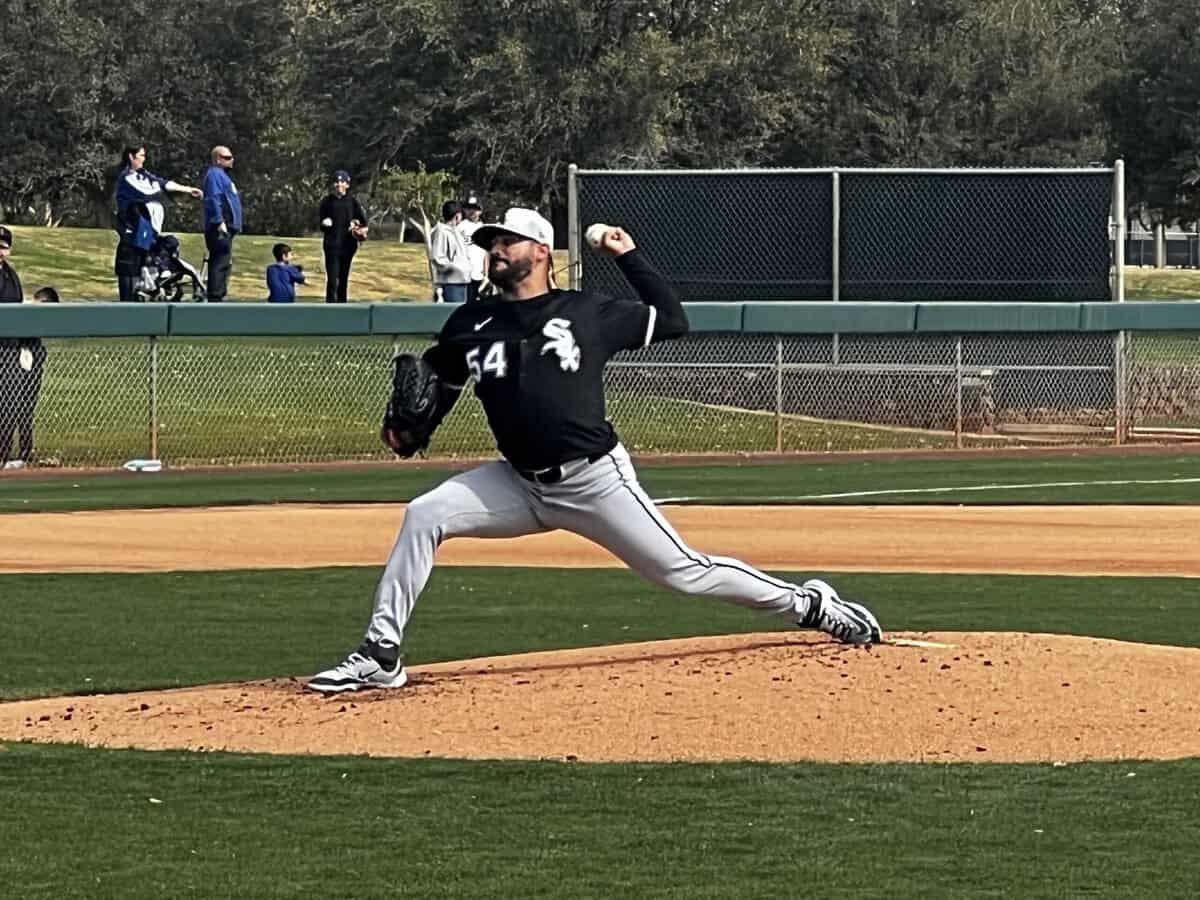Less than hour after hitting 101 mph on the radar gun during his first Cactus League outing, White Sox prospect Grant Taylor explained why his overpowering fastball wasn't even his most-used pitch on the day.
"You see a lot of guys in the game nowadays throwing 100 mph," Taylor said. "I feel like the more options I have, the more I can gain my confidence throwing different pitches, it’s only going to be to my benefit. The 100 mph, if I throw it 60 percent of the time, it starts to not look like 100 mph quite so much."
It seems like a line of reasoning from a very specific source. But when presented with the quote, Brian Bannister concurred with its sentiment, yet said Taylor arrived in the Sox organization already with such a mindset about pitching, and termed it as one of the benefits of pulling prospects from premier player development programs on the collegiate level.
Scouts from other teams have wondered aloud whether Taylor, a ludicrously hard-thrower working to develop starter-level command and add a kick changeup, will not soon purge one of his three different breaking balls. But talking to the 22-year-old makes it clear he values showing a wide diversity of pitch shapes for its own sake.
If SaberSeminar last summer in Chicago was any indication, we're not far from metrics that quantify the benefits of a wide arsenal becoming publicly commonplace. But the White Sox view the math on fastball usage as even simpler: Hitters gear their whole approach around velocity, fastballs are the pitch that hitters fare best against on average, and usage around the league has been steadily going down for good reason.
And if the kid who throws 101 mph isn't an exception to this approach, then no one is.
"He threw 101 mph the other day and it was still 38 percent fastball usage, so that's right where we want it to be, and even at higher velocities we're still going to be mixing hard," said pitching coach Ethan Katz. "The fastball pops more when it's being less used. But it's same thing for why we can't throw seven sliders in a row. It doesn't have the same effect. But we know how much secondary stuff outperforms fastballs, so we want to make sure we're taking care of that."
The White Sox already only threw 44.6 percent fastballs as a staff last season per Sports Info Solutions, which was the sixth-lowest rate in the sport, but were closer to the team throwing the fifth-most heaters than they were to the Red Sox's league-low 37.1 percent rate, which team officials talk about as though it's aspirational.
One risk of throwing fewer fastballs is obviously that it's harder to reliably locate breaking balls and changeups for strikes, and the White Sox are coming off a season of posting the highest walk rate in the sport (the Red Sox had the sixth-lowest). But developing secondaries to act as strike-grabbers in certain quadrants and contexts is what spring training is for. You don't have to be over 40 to remember starting pitchers claiming to only work on fastball command in spring, and now such a memory is treated like the dinosaur comment that it is.
"I don't have an elite fastball compared to some guys in the league," said Davis Martin. "So I want to sink it, cut it, throw changeups, throw sliders, keep guys off balance. Those are my strengths, so I want to work on my strengths from the get-go."
And necessity definitely has some influence in this innovation. The Mariners aren't bull-headed about pitch usage, the reason they threw the fourth-most fastballs last year is because they had the hardest-throwing and possibly most talented staff in the league. While Taylor is a good demonstration of the White Sox's ideological commitment to mixing things up, the current roster already steers into their hunt for alternatives.
Sean Burke and whatever has gotten into Shane Smith might represent the only above-average fastballs- -- certainly of the overpowering four-seamer kind -- in the White Sox starter mix. Prelander Berroa going down took one of the few fireballers out of the bullpen, and even he was a slider-first guy. There simply aren't many likely contributors to the 2025 staff who would compel the Sox to allow for a more fastball-forward style.
The ideal vision the Sox have for their starting rotation is a lot of early contact and quick outs, giving way to long outings from the trio of Martin, Jonathan Cannon and Martín Pérez. But for Sox arms who can't miss bats at high levels -- of which there are many -- the enemy becomes at-bats that won't end because of foul-offs, and mixing up usage emerges as the advised way of ending troublesome tangles.
"Last year me and Davis both learned just how important those quick outs are, and how detrimental those 20-25 pitch innings are to your outing," Cannon said. "It's just so hard to make up ground if you have a 25-pitch inning. Obviously those happen, but I look to try to get those early outs, and I think it starts with getting ahead. We've preached a lot about getting strike one and getting two [strikes] out of [first] three [pitches], and we really are trying to put an emphasis on it this spring. I think that's directly related to those longer outings. Just getting ahead of guys and getting them on defense, hitting early ground balls and early popups. Just get them in and out of the box."
"Most pitchers, you either need to have something that gets above barrels and can sneak below barrels, or you need everything to be below barrels," said Brian Bannister. "You get into trouble when you're just trying to miss above barrels. You have nothing to get under barrel, and you just become very homer-prone. That's not a good formula."
Hopefully at this point it's well-established that the White Sox don't have many overpowering fastballs that can ride over barrels, but if everyone knows they're going to be working below, they want to inject as much mystery as possible about how fast it's coming.






